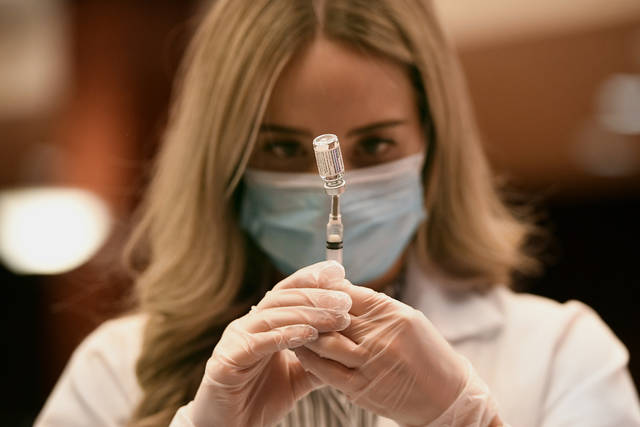Lori Falce: Risks of not researching women's health
It seems like just a couple of weeks since I was writing a column where I said we need to pay more attention to the way diseases and treatments affect the bodies of women.
Oh, wait. It was.
Now, here we are, with one of the three vaccines meant to battle back the coronavirus pandemic stuck on pause. The Centers for Disease Control and Prevention and the U.S. Food and Drug Administration made the move after the single-dose Johnson & Johnson vaccine — particularly attractive for many clinics because it isn’t as temperature-sensitive as the others — caused blood clots in six female patients aged 18 to 48. One of the women died.
The agencies are to be commended for their immediate and proactive step. They are doing what they absolutely should be doing — taking six adverse reactions seriously, despite 7.5 million doses delivered.
This needs to be the start of a trend. Medicine needs to keep paying attention when patients report problems and be willing to take the big, dramatic steps that find answers.
Because that should have happened years earlier.
For some people, the fear with the clotting problem is that the vaccine was developed in just a year. The one-in-a-million side effect is statistically too small to necessarily be expected in trial pools of thousands, but that doesn’t stop the niggling thoughts that maybe something was rushed or missed.
Something has been missed for decades — and maybe these six cases show exactly why it is so important.
Women have famously not been the focus that they should have been when it came to heart disease. A woman who has a heart attack can present differently. The stereotypical heart attack is seen as a man clutching his chest in pain. Women can feel that pain too — but they are more likely to have other symptoms, like nausea or fatigue.
Overall, heart disease is the leading cause of death for everyone. It’s the top cause for both men and women aged 85 and up, and second for those 45 to 84. But it is third for women aged 20 to 44 while it comes in fourth for men in that category. For those 19 and under, women and girls are 50% more likely to die of heart disease than men.
So why has even Congress’s General Accountability Office chided the National Institutes of Health for not representing women enough in health research like that exploring heart disease?
It isn’t just the research. It’s the risk. Six cases of clots have shuttered a third of the nation’s vaccine program in a pandemic. But three to nine women out of every 10,000 on hormonal birth control can develop clots. More than 6 million women take FDA-approved oral contraceptives.
The risks are seen as acceptable. Although they have been reduced over time as lower doses of estrogen have cut the potential for deep vein thrombosis and pulmonary embolism, women who want to prevent pregnancy or who take the pills to regulate hormonal imbalances still do so with a possibility of danger.
This is important because clots are a recurring theme in serious women’s health issues that have been underestimated for years. It isn’t just birth control and heart attacks. It is also strokes.
And as much as covid-19 has masqueraded as a respiratory condition, a year into the pandemic, it is understood to be much more about the circulatory system. Clots are a known problem of the disease or a long-haul complication during recovery.
That is all the more reason to have a better appreciation for women’s health overall. More research needs to be conducted into how women’s bodies work, how they react to disease, how they handle medication and how they heal.
This could be a start to changing years of neglect. But we have known that women were not being adequately included in research since at least the 1993 NIH Revitalization Act. The American Heart Association’s Go Red for Women campaign has pushed for more attention for women’s health issues for years.
So in two years or 12 or 20, I will probably have to write something like this again.
Lori Falce is the Tribune-Review community engagement editor and an opinion columnist. For more than 30 years, she has covered Pennsylvania politics, Penn State, crime and communities. She joined the Trib in 2018. She can be reached at lfalce@triblive.com.
Remove the ads from your TribLIVE reading experience but still support the journalists who create the content with TribLIVE Ad-Free.

